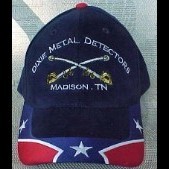Target ID / Vdi Numbers For Gold Nuggets And Gold Jewelry
-
Similar Content
-
- 6 replies
- 347 views
-
- 47 replies
- 4,109 views
-
- 0 replies
- 371 views
-
- 25 replies
- 1,469 views
-
- 6 replies
- 550 views
-
- 3 replies
- 411 views
-
-








Recommended Posts
Create an account or sign in to comment
You need to be a member in order to leave a comment
Create an account
Sign up for a new account in our community. It's easy!
Register a new accountSign in
Already have an account? Sign in here.
Sign In Now